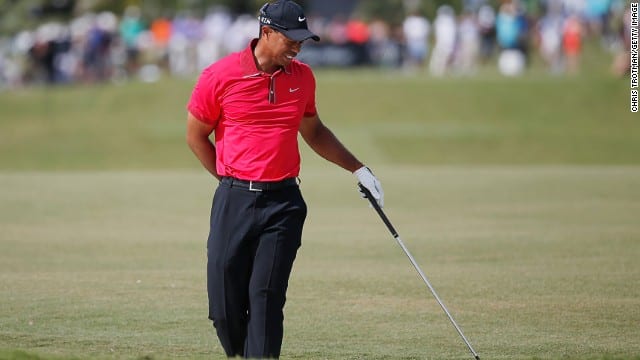https://www.youtube.com/watch?v=iPvAqAKMp6Q
Typically after seeing Tiger Woods hitting golf balls again, most people begin questioning and searching what his latest equipment choices are. Which brand is he hitting? Which model? What specifications has he requested? How will his form cope? How will his back tolerate four rounds of consecutive golf. Very little attention is drawn to his history of numerous surgeries on his low back and his journey behind the scenes of the hard yards spent rehabilitating after these procedures. The fact is, Tiger Woods had to complete numerous periods of strengthening & rehabilitation prior to getting the clearance to even hold a golf club after his surgeries. Here is a brief run down of the history of his back pain.
March 2014 – Withdraws from completing the final round of the Honda Classic – voicing lower back spasms preventing him from continuing playing.
April 2014 – Fails to compete in the Masters for the first time in his professional career, citing as having a microdiscectomy as the reason for his period of rest.
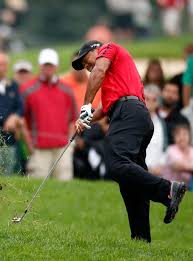
August 2014 – Tiger withdraws during the final round of the World Golf Championship Bridgestone tournament after playing a shot on an awkward lie. He immediately suffered from spasms and described in his interviews as though he had ‘jarred his lower back’.
February 2015 – Withdraws during the opening round of the Farmers Insurance Open. The nature of play was very stop-start due to multiple fog delays. When questioned about it after the round, Tiger can be heard describing his ‘glutes are just shutting off, they don’t activate it and then hence it goes into my lower back’.
September 2015 – Has a second microdiscectomy procedure preventing him from playing golf until 2016.
October 2015 – Required to have a follow up procedure by the same neurosurgeon regarding his September 2015 microdiscectomy, bringing his total lumbar spine surgical count to 3
Entire 2016 – Announced that Tiger had intentions to return to professional golf in October. However on October 10, he withdraws due to his body not feeling physically prepared for the demands of competitive golf.
February 2017 – Competes in the Omega Dubai Desert Classic. Shoots a 77 in his first round and appears to suffer from no low back concerns. The following day during his second round, he has to withdraw due to again suffering from low back spasms.
April 2017 – Proceeds to have another surgery (anterior lumbar interbody fusion) in attempt to relief his ongoing lower back and leg pain. He announced that he is expected to make a recovery after approximately six months worth of rehabilitation. He wrote on his website, “As for returning to competitive golf, the long-term prognosis is positive. My surgeon and physiotherapist say the operation was successful. It’s just a matter of not screwing up and letting it fuse. I’m walking and doing my exercises, and taking my kids to and from school. All I can do is take it day by day. There’s no hurry.”
As you can see, he has been through 4 surgeries on his lower back throughout a 3 year period. A microdiscectomy is a procedure performed whereby a portion of a disc is removed, usually when it is compressing a nerve. His fourth surgery that was performed is known as an anterior lumbar interbody fusion. This is effectively removing the disc that sits between the two vertebrae. A spacer, or piece of metal is placed where the disc previously was placed. This leads to the two vertebrae fusing together, essentially becoming one unit. This can have long term consequences as now the spine will inherently have different segmental movements due to being fused at a certain level. These procedures were the correct option for Tiger, I do however want to discuss the considerations for rehabilitation for a golfer following lumbar surgery.
The initial six weeks following surgery is simply focused around allowing the post operative pain to settle. Typically, most people will experience a relief of their leg pain that they were experiencing pre surgery almost instantly. We have to respect the bodies natural ability to heal & promote this during the early phase. Exercises typically involve gentle stretches of the hips coupled with dedicating 30-60 minutes of gentle walking each day. When ready, the golfer can begin to introduce core exercises that are designed to build motor control, strength, and endurance to the muscles that help strengthen the spine. A full body examination should also be performed to highlight other areas that have the potential to be improved whilst recovering from low back surgery. Lets focus on the low back part for now.e
Some exercises that are fantastic to introduce at this point include;
- Dead bugs
- Bird dogs
- Stir the pot
- Squats
- Pallof press
After approximately 3 months, we can begin to introduce some golf specific core exercises. Consideration has to be placed towards overall total volume – as we don’t want to overload the golfer once we consider the amount of golf balls spent plus time spent doing rehabilitation in the gym. At this point in time, high level functional core exercises including anti-rotation and rotational exercises should be progressed as tolerated. Return to weightlifting such as deadlifts & squats should be reintroduced at a cautious pace to ensure minimal risk is taken to re aggravate the low back pain.
It is important to monitor low back symptoms once the golfer is given the green flag to return to putting, chipping & pitching. It’s common for an increase in a generalised ache through the area due to the reconditioning process that occurs through the body as a result of the period post surgery. It’s important to also track the mobility of the thoracic spine & hips, as these are the areas above/below the low back. If these areas remain mobile, it ensures less pressure is placed through the lower back & allows the golfer to move into optimal positions throughout their swing.
Tiger Woods is one of the greatest golfers of all time, yet he has succumbed to low back pain & has consequently undergone numerous surgeries. This should highlight the need for effective regular mobility and stability exercises to prevent amateur golfers from following the same pathway.
Michael Dawson
Titleist Performance Institute Physiotherapist
 August 2014 - Tiger withdraws during the final round of the World Golf Championship Bridgestone tournament after playing a shot on an awkward lie. He immediately suffered from spasms and described in his interviews as though he had ‘jarred his lower back’.February 2015 - Withdraws during the opening round of the Farmers Insurance Open. The nature of play was very stop-start due to multiple fog delays. When questioned about it after the round, Tiger can be heard describing his ‘glutes are just shutting off, they don’t activate it and then hence it goes into my lower back’.September 2015 - Has a second microdiscectomy procedure preventing him from playing golf until 2016.October 2015 - Required to have a follow up procedure by the same neurosurgeon regarding his September 2015 microdiscectomy, bringing his total lumbar spine surgical count to 3Entire 2016 - Announced that Tiger had intentions to return to professional golf in October. However on October 10, he withdraws due to his body not feeling physically prepared for the demands of competitive golf. February 2017 - Competes in the Omega Dubai Desert Classic. Shoots a 77 in his first round and appears to suffer from no low back concerns. The following day during his second round, he has to withdraw due to again suffering from low back spasms.April 2017 - Proceeds to have another surgery (anterior lumbar interbody fusion) in attempt to relief his ongoing lower back and leg pain. He announced that he is expected to make a recovery after approximately six months worth of rehabilitation. He wrote on his website, “As for returning to competitive golf, the long-term prognosis is positive. My surgeon and physiotherapist say the operation was successful. It’s just a matter of not screwing up and letting it fuse. I’m walking and doing my exercises, and taking my kids to and from school. All I can do is take it day by day. There’s no hurry.”As you can see, he has been through 4 surgeries on his lower back throughout a 3 year period. A microdiscectomy is a procedure performed whereby a portion of a disc is removed, usually when it is compressing a nerve. His fourth surgery that was performed is known as an anterior lumbar interbody fusion. This is effectively removing the disc that sits between the two vertebrae. A spacer, or piece of metal is placed where the disc previously was placed. This leads to the two vertebrae fusing together, essentially becoming one unit. This can have long term consequences as now the spine will inherently have different segmental movements due to being fused at a certain level. These procedures were the correct option for Tiger, I do however want to discuss the considerations for rehabilitation for a golfer following lumbar surgery.The initial six weeks following surgery is simply focused around allowing the post operative pain to settle. Typically, most people will experience a relief of their leg pain that they were experiencing pre surgery almost instantly. We have to respect the bodies natural ability to heal & promote this during the early phase. Exercises typically involve gentle stretches of the hips coupled with dedicating 30-60 minutes of gentle walking each day. When ready, the golfer can begin to introduce core exercises that are designed to build motor control, strength, and endurance to the muscles that help strengthen the spine. A full body examination should also be performed to highlight other areas that have the potential to be improved whilst recovering from low back surgery. Lets focus on the low back part for now.eSome exercises that are fantastic to introduce at this point include;
August 2014 - Tiger withdraws during the final round of the World Golf Championship Bridgestone tournament after playing a shot on an awkward lie. He immediately suffered from spasms and described in his interviews as though he had ‘jarred his lower back’.February 2015 - Withdraws during the opening round of the Farmers Insurance Open. The nature of play was very stop-start due to multiple fog delays. When questioned about it after the round, Tiger can be heard describing his ‘glutes are just shutting off, they don’t activate it and then hence it goes into my lower back’.September 2015 - Has a second microdiscectomy procedure preventing him from playing golf until 2016.October 2015 - Required to have a follow up procedure by the same neurosurgeon regarding his September 2015 microdiscectomy, bringing his total lumbar spine surgical count to 3Entire 2016 - Announced that Tiger had intentions to return to professional golf in October. However on October 10, he withdraws due to his body not feeling physically prepared for the demands of competitive golf. February 2017 - Competes in the Omega Dubai Desert Classic. Shoots a 77 in his first round and appears to suffer from no low back concerns. The following day during his second round, he has to withdraw due to again suffering from low back spasms.April 2017 - Proceeds to have another surgery (anterior lumbar interbody fusion) in attempt to relief his ongoing lower back and leg pain. He announced that he is expected to make a recovery after approximately six months worth of rehabilitation. He wrote on his website, “As for returning to competitive golf, the long-term prognosis is positive. My surgeon and physiotherapist say the operation was successful. It’s just a matter of not screwing up and letting it fuse. I’m walking and doing my exercises, and taking my kids to and from school. All I can do is take it day by day. There’s no hurry.”As you can see, he has been through 4 surgeries on his lower back throughout a 3 year period. A microdiscectomy is a procedure performed whereby a portion of a disc is removed, usually when it is compressing a nerve. His fourth surgery that was performed is known as an anterior lumbar interbody fusion. This is effectively removing the disc that sits between the two vertebrae. A spacer, or piece of metal is placed where the disc previously was placed. This leads to the two vertebrae fusing together, essentially becoming one unit. This can have long term consequences as now the spine will inherently have different segmental movements due to being fused at a certain level. These procedures were the correct option for Tiger, I do however want to discuss the considerations for rehabilitation for a golfer following lumbar surgery.The initial six weeks following surgery is simply focused around allowing the post operative pain to settle. Typically, most people will experience a relief of their leg pain that they were experiencing pre surgery almost instantly. We have to respect the bodies natural ability to heal & promote this during the early phase. Exercises typically involve gentle stretches of the hips coupled with dedicating 30-60 minutes of gentle walking each day. When ready, the golfer can begin to introduce core exercises that are designed to build motor control, strength, and endurance to the muscles that help strengthen the spine. A full body examination should also be performed to highlight other areas that have the potential to be improved whilst recovering from low back surgery. Lets focus on the low back part for now.eSome exercises that are fantastic to introduce at this point include;- Dead bugs
- Bird dogs
- Stir the pot
- Squats
- Pallof press
Let's get started — How can we help?
Physiotherapy
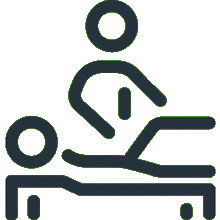
Chiropractic
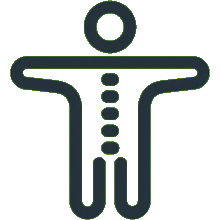
Podiatry
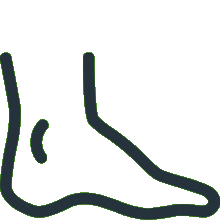
Massage Therapy
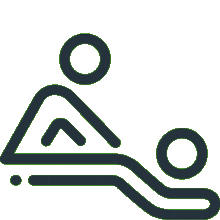
Women's Health Physiotherapy
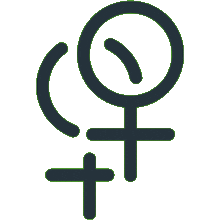
Running Program Tailored To Your Goals
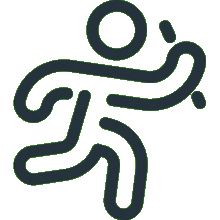
Joint Mobilisation
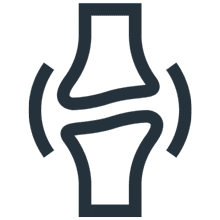
Active Release Technique
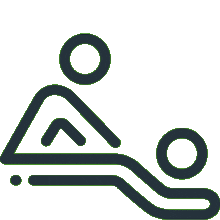
Exercise Prescription
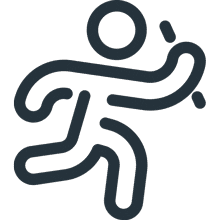
Real Time Ultrasound Imaging
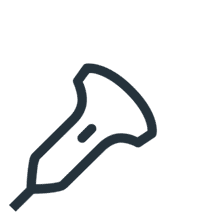
Spinal Manipulation
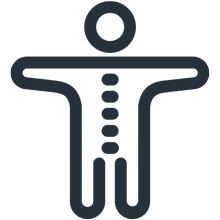
Functional Movement Screen
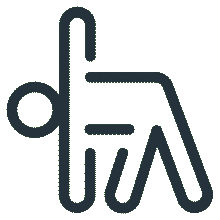
Knee Pain Treatment

Hamstring Strain Treatment
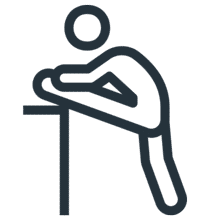
Hip Pain Treatment

Upper, Middle & Lower Back Pain

Neck Pain Treatment

Shoulder Pain & Rotator Cuff Tear

Can't find what you're after?
View all ServicesOr email the PEAK team at info@peakssc.com.au
Hawthorne
- Phone: (07) 3399 3318
- Fax: (07) 3319 6577
Address
5/171 Riding Road,Hawthorne, QLD, 4171 Get Directions
Opening Hours -
6 days per week
- Monday - Friday: 7:00 am - 8:00 pm
- Saturday: 7:00 am - 1:00 pm
To make a booking outside of business hours, please use our form by clicking here.
New Farm
- Phone: (07) 3399 4668
- Fax: (07) 3319 6577
Address
1/15 Lamington Street,New Farm, QLD, 4005 Get Directions
Opening Hours -
6 days per week
- Monday: 7:00 am - 8:00 pm
- Tuesday: 7:00 am - 8:00 pm
- Wednesday: 9:00 am - 8:00 pm
- Thursday: 10:00 am - 8:00 pm
- Friday: 7:00 am - 3:00 pm
- Saturday: 7:00 am - 3:00 pm
To make a booking outside of business hours, please use our form by clicking here.
